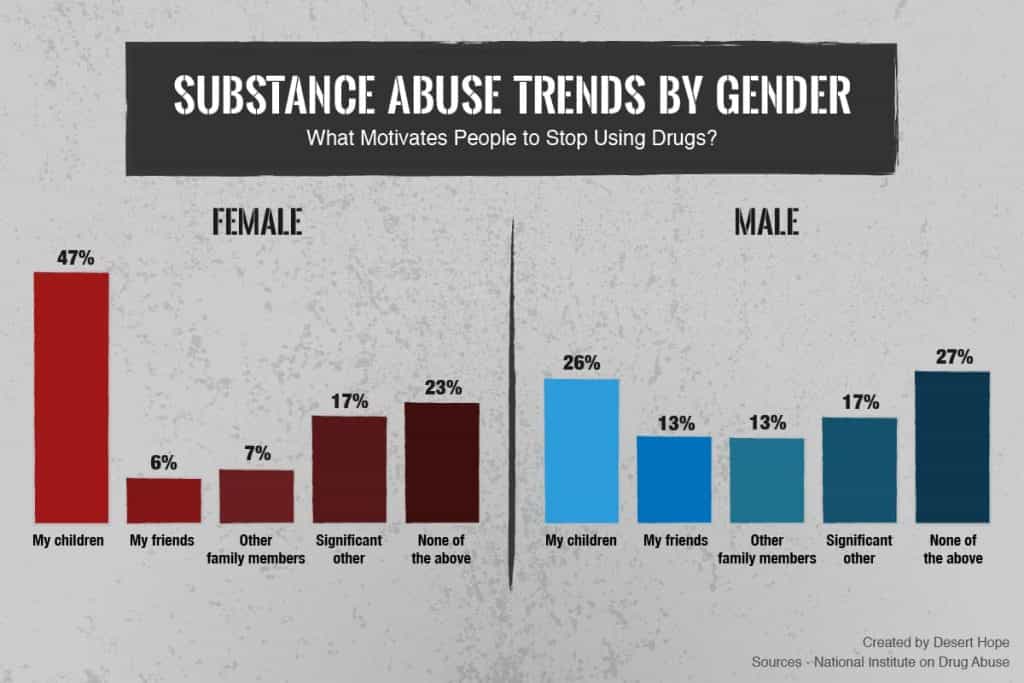Drug abuse, an insidious affliction affecting many individuals and communities, exhibits a complex interplay with gender. The manifestation of substance abuse disorders underlines differences in social roles, behavioral patterns, and biological responses between genders. This nuanced landscape demands an exploration of how these differences emerge and evolve, revealing not just statistics but human stories shaped by societal norms and expectations.
Gender disparities in drug abuse are not mere numbers; they represent a societal issue that merits acute scrutiny. The external pressures faced by different genders can profoundly influence substance abuse patterns, and understanding these variables is crucial for developing targeted interventions. Such scrutiny challenges the reader to interrogate their preconceptions regarding gender and substance abuse as an issue that extends far beyond individual choice or moral failing.
Through the exploration of pathways to addiction, societal perceptions, and health outcomes, one can discern a tapestry of factors contributing to the gendered landscape of drug abuse.
Understanding Pathways: How Gender Shapes Substance Use
Men and women frequently embark on divergent paths towards drug use. Research indicates that men are more likely to engage in risk-taking behaviors, contributing to a higher likelihood of experimentation with drugs. This propensity is often exacerbated by social norms emphasizing masculinity, which valorizes risk-taking and aggression. Conversely, women are generally socialized towards nurturing and are often subjected to stigma related to substance use. Consequently, women may begin their journeys with drugs in response to trauma, relational dynamics, or mental health issues, which are less publicly acknowledged than the risk-seeking behaviors typically associated with men.
Furthermore, the biological predispositions of each gender play a significant role. Research reveals that hormonal differences can influence how drugs are metabolized in the body. For instance, women generally experience increased sensitivity to the effects of drugs due to differences in body composition and hormonal cycles. Such biological variances necessitate a re-evaluation of treatment approaches, tailored to the nuances of gender-specific experiences with substance use.
Social Contexts: Gendered Experiences and Drug Abuse
The social context in which individuals reside significantly shapes their experiences with substance use. Various environmental factors—from socio-economic status to exposure to trauma—intersect with gender to create distinct profiles for drug abuse. Women often encounter barriers that impede their access to treatment, from childcare responsibilities to financial constraints, ultimately leading to delayed or avoided help-seeking behavior.
Moreover, societal expectations heavily influence the perception of drug use. When women engage in substance use, they are frequently met with stigmatization and judgment that men do not face to the same degree. Cultural narratives often ascribe moral failings to women who abuse drugs, painting them as irresponsible mothers or incapable individuals. Thus, these narratives perpetuate cycles of guilt and shame, which can hinder recovery. It is crucial to acknowledge that this stigmatization can deter women from coming forward, thus obscuring the true scale of the issue.
Furthermore, male counterparts may have more leniencies in their social environments. Substances such as alcohol and marijuana can often be culturally endorsed in male-centric realms, creating a permissive atmosphere. In contrast, women may enjoy less favorable conditions that can result in a higher level of apprehension regarding substance use and its aftermath.
Health Outcomes: The Gendered Impact of Substance Abuse
Exploring the health outcomes associated with drug abuse reveals alarming gender disparities. Women often exhibit a faster progression from initial use to dependence—a phenomenon termed “telescoping.” This accelerates the onset of mental health issues, which are frequently comorbid with substance use disorders amongst women. Depression and anxiety frequently coalesce with substance abuse among women, often as coping mechanisms for underlying psychological distress resulting from societal pressures, trauma, or violence.
In men, the interaction may present differently; while they may indulge in substance use more openly, their health repercussions could manifest as severe physical ailments or higher mortality rates due to overdose. This raises pertinent questions about the way gender biases inform the medical response to substance abuse. Treatment protocols must be gender-sensitive, addressing the unique needs shaped by biological and social factors.
Recent studies have pointed towards a rising trend of substance abuse among women, particularly in relation to prescription drugs and alcohol. The interplay of gendered social roles, psychological stress, and accessibility to substances often interlocks, pushing women towards substance use as a coping strategy.
Interventions and Policy: Towards Inclusive Solutions
Addressing the nuances of drug abuse through a gendered lens necessitates informed interventions and policies. Societal recognition of gender differences should inform treatment programs designed to combat substance abuse. Programs tailored specifically to women’s needs, including child care facilities during treatment, and mental health support, are critical in ensuring that women gain access to the resources they require.
Additionally, public health campaigns must combat the stigmatization attached to female substance abuse. Efforts should aim to normalize conversations about women’s experiences and promote supportive environments that encourage help-seeking behaviors. Empowering women to access treatment without fear of judgment is paramount for addressing the issue effectively.
Moreover, data collection regarding substance use patterns must incorporate gender as a variable of analysis. Understanding discrepancies in consumption rates and treatment outcomes based on gender will facilitate the development of nuanced public health strategies. Policymakers must acknowledge the socio-economic and cultural factors that disproportionately affect women, thus creating a responsive framework that addresses their unique challenges.
Conclusion: A Call to Action
The exploration of drug abuse through the lens of gender underscores the imperative to transcend simplistic narratives that often surround substance use. An inclusive approach to understanding these disparities not only promotes an effective discourse but also informs the implementation of targeted strategies for rehabilitation and support. The multifaceted nature of drug abuse calls for comprehensive, thoughtful, and considerate measures to address the pressing needs of all affected individuals, respecting their unique circumstances and experiences.
As society becomes increasingly aware of these gendered nuances, a challenge is set forth: to dismantle harmful stereotypes, advocate for equitable treatment measures, and support all individuals on their journey towards recovery.
